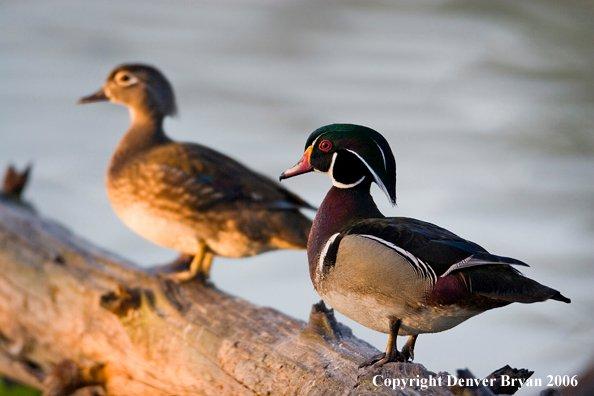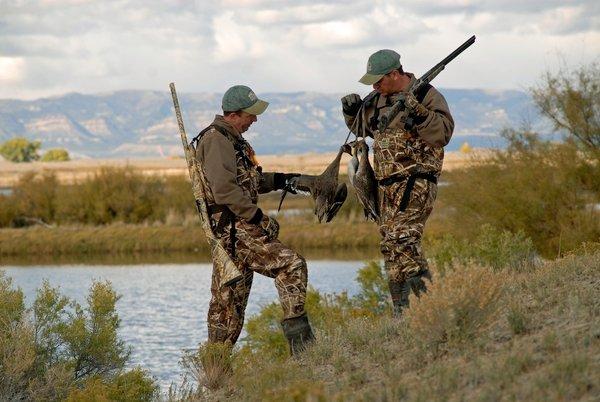10 Great Tips for Duck Hunting

Joe Balog is our waterfowl editor, and we like him because he doesn't do things the same old way. Joe's a public hunter, and for him to shoot as many birds as he does, he must stay one step ahead of the game. Here are 10 of his best tips for duck hunting.
BE A NATURALIST
Many hunters spend plenty of time hunting ducks but little time observing them. Some of the best hunters and fishermen I know have spent as much time studying their quarry as they have pursuing it. To be able to recognize patterns in behavior it's important to understand why ducks do what they do. Start with food sources: learn what aquatic invertebrates are important to waterfowl. Make note of when food preferences shift to grains and seeds. Learn to distinguish between field crops. Identify water depths favored by diver ducks. All of these things can be used to later predict what waterfowl will be doing when it's time to hunt them, making it easier to choose the right location. Other times, breeding behavior may dictate calling or decoy strategies. As plumages change in the fall, so should decoy spreads. Ducks and geese are fascinating animals. Learning more about them is fun, and will make you a better hunter.
Many hunters use mallard decoys all the time. Mallards are easiest to find and often the cheapest. And, hunters figure that when playing the percentages, mallards are never wrong. But day in and out, do you see more mallards or other species? Ducks have great eyesight, so a spread of all mallards when no mallards are around looks fake. If you're hunting wood ducks and teal early in the season, and then gadwalls, pintails, black ducks and other species later on, invest in decoys to mimic those. Don't be afraid to make mallards the minority in your spread.
STRESS CONCEALMENT
On days when everything goes right and the ducks are falling out the sky and right into your decoy spread, it seems you could sit in a lawnchair with blue jeans and shoot a limit. Those days, however, are few and far between. As ducks migrate each fall, they stop in predictable areas where they're easy to hunt. New ducks," as they're called, quickly become stale ducks after a few days of hunting. And once educated, stale ducks are very leery of decoys and especially flaws in concealment. For that reason, hunters should go the extra mile with face paint, full camo, concealing cover and a low profile.
GET AWAY FROM THE BOAT
One thing that has dramatically helped my hunting over the last five years has been keeping a good distance from my boat. Although I camouflage my boat well, it is much easier to hide a couple hunters and a dog stand than an entire 14-foot rig. In areas where hunting out of the boat is necessary, be sure to use camouflage patterns that match area surroundings from above. In most cases, tans and browns are better than standard John boat green.

Shotgunning is an art form, much different than the deliberate aiming of a rifle or handgun. To be a good shotgunner, a waterfowler must understand that the purpose is to spread a moving pattern of shot in the same area as a moving target, timing it so they both end up in the same place at the same time. Think of it like spraying the dog with a water hose as he runs across the back yard. Visualize the shot as a moving spray that you sweep through the target. Do it in a fluid motion, with both eyes open.
WHEN TO CALL IS MORE IMPORTANT THAN HOW TO CALL
Spend any amount of time listening to ducks in a major refuge and it becomes apparent that they all don't sound the same. Some are high and squeaky; others are low and raspy. Some do a five-note cadence; others do seven or eight notes. Many just quack a lot. For this reason, it is far more important to know when to call ducks than how. A good caller, who calls to ducks at the right time, can often turn them with the worst-sounding call on the market. The key is to always call to ducks when they appear to be leaving the area. As they approach, quack or feed call, at most. Once they seem to be leaving, or on the corners as experienced callers term it, bring them back with a five-note cadence. Resist over calling, and just try to get one bird out of the bunch to turn your way. He'll bring the rest with him.
PAY ATTENTION TO TINY DETAILS
I once had an entire morning hunt go sour because my stainless boat propeller was slightly visible above the water. To the ducks, it looked like a neon sign flashing, don't come in here! Sometimes the smallest details can make an extraordinary difference. When ducks refuse to sit down in the shooting hole of your decoy spread, switch things up. Move motion decoys upwind, or change the shape of the formation. Check, and recheck, the look of your blind or setup. Another often overlooked variable: sun angle and shadows. Boat shadows look unnatural in an otherwise natural setting. Many hunters continue to hunt the same way when ducks won't cooperate, thinking that the next bunch is sure to come into the spread perfectly. Yet the ducks will, more often than not, continue to work the same way. Ducks and geese are actually predictable, as they respond and react to the natural conditions as Mother Nature dictates. Unlike humans, they don't think things over or have an agenda. Respond and react to their reactions and get in tune.
Ever wonder how field hunters came up with the idea to flag distant geese toward their spread? Somebody tried it, and was probably initially met with skepticism from fellow hunters. I bet those skeptical buddies changed their tune fast.
In waterfowling, everything we do is variable depending on the mood of the game. And somewhere, somebody once initially tried everything we think of today as a proven system. Learning to duck hunt on my own, without a mentor or teacher, has taught me some important lessons that others may overlook. A quick one to note: when things get slow, walk around the decoy spread. The muddied water is highly visible to ducks flying far overhead. It's something I see few hunters in my part of the country do, but it's incredibly effective. I learned it by just being observant and willing to try new things.
DO WHAT WORKS FOR YOU

KEEP A JOURNAL
I sometimes wish I had a personal journalist with me like the adventurers and explorers of yesteryear. Think of what we could all learn from ourselves if we recorded everything that happened, and relied less on our often-distorted memory. In any case, over the past several years, I've kept detailed records of every hunt, and nothing has been more valuable of a hunting tool than those journals. It's not an easy thing to do; it takes a lot of discipline that even the most dedicated hunters, me included, often struggle to find time for in today's busy world. But by simply recording predominant weather and wind, as well as other details learned each day, a predictable pattern begins to emerge that is the best piece of equipment a waterfowl hunter will ever own. Each year, keeping such journals will equate to more ducks on the strap, bottom line.






